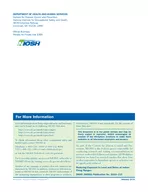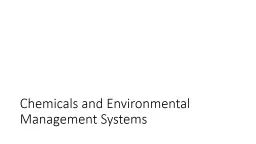PDF-Fourth National Report on Human Exposure to Environmental Chemicals Executive Summary
Author : celsa-spraggs | Published Date : 2014-11-21
S populations exposure to environmental dust or other environmental media such as chemicals by measuring chemicals in peoples consumer products Blood and urine levels
Presentation Embed Code
Download Presentation
Download Presentation The PPT/PDF document "Fourth National Report on Human Exposure..." is the property of its rightful owner. Permission is granted to download and print the materials on this website for personal, non-commercial use only, and to display it on your personal computer provided you do not modify the materials and that you retain all copyright notices contained in the materials. By downloading content from our website, you accept the terms of this agreement.
Fourth National Report on Human Exposure to Environmental Chemicals Executive Summary: Transcript
Download Rules Of Document
"Fourth National Report on Human Exposure to Environmental Chemicals Executive Summary"The content belongs to its owner. You may download and print it for personal use, without modification, and keep all copyright notices. By downloading, you agree to these terms.
Related Documents














